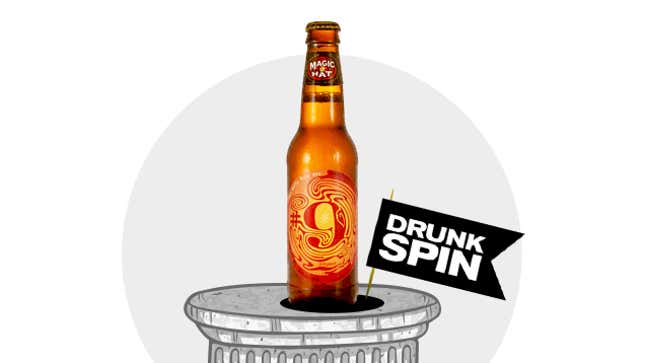
Some people like to show off. This is a boring and undisputed part of the human condition, that we have to share the planet with ostentatiously effective people who are into things like sit-ups and graduate school. Oooh, look at me, I can make weird extra muscles pop out of my stomach! Hey, check out Mrs. Ambition over here with her specialized knowledge and her increased earning potential! Yeah, we’re all wicked impressed.
This trait is expressed many different ways in the beer community, but for now let’s mock just one group: the proud hoarders who like us all to know about their personal beer-aging programs. These are the people who buy an extra bottle of Goose Island’s Bourbon County Brand Stout every winter to add to the vertical they’re assembling for some lovely rainy day. They are pretending toward research—won’t it be educational to open the 2011, 2012, 2013, 2014, and 2015 at the same time!—but what they’re really doing is bragging. Their primary motivation is to make the rest of us peasants aware of their surpluses of storage room, self-control, and $10 bills.
I have very little interest in how an individual bottle of beer ages. I can’t recall having a beer more than 18 months out of the bottle shop that had even held its initial quality, and I’ve certainly never had one that’s improved with time. (When I talk about a beer’s age, I’m referring to its retail birthday. Beers that are incubated in-house prior to release are a whole other thing, being the result of a professional brewer’s plan, not a beer collector’s hobby.) Now, that’s just me. I’m sure it happens all the time, or at least that some people can convince themselves it does, and that’s fine by me. Just please never speak to me of it again. I don’t need your Historical Stout Preservation Society reminding me of my own beer-to-mouth existence.
What I am interested in, however, is how a brand of beer ages over the years, both in terms of absolute quality and public perception. It’s hard to measure changes in a beer’s objective merits over time, but there’s almost nothing easier than getting a beer-message-board guy to share his opinions, making the evolution of public perception very simple to gauge.
A couple weeks ago, Drunkspin was pretty hard on Bell’s Oberon Ale, and while reader reaction was all over the place, two distinct threads did emerge: In addition to the natural fact that I’m an asshole, we also learned that a whole lot of experienced Oberon drinkers are convinced the quality has declined over time. Today I’m curious to see what you all think about Drunkspin’s official stance that Magic Hat #9, one of the first modern fruit beers, kinda sucks now, too.
The aroma is less fruit-forward than expected, with some honey and stale, cardboard-y bread poking out beneath the anticipated apricot and another vague impression of a stone fruit that I’ll call peach. The busy but vague Magic Hat website (about which more below) makes no mention of wheat, but I thought I sensed some beneath the admittedly fine caramel malt; #9 is also brewed with Apollo and Cascade hops that show themselves, if at all, in the form of a bit of lemon on the finish.
Many seasoned drinkers I consulted prior to writing this have suggested the recipe could have changed through the years. I don’t have a strong enough memory of early #9 to have a definitive opinion, but it seems possible the ingredients and/or brewing process have been dumbed down through the decades of acquisitions that have followed Magic Hat’s 1994 founding in Vermont. (It’s currently owned by Costa Rica’s Florida Ice & Farm Company.) This would feel like reckless speculation if the beer’s marketing campaign weren’t so reliant on manufactured mystique. The aforementioned Magic Hat site has this to say about #9:
A beer whose mysterious and unusual palate will swirl across your tongue and ask more questions than it answers. Brewed clandestinely and given a name whose meaning is never revealed. Why #9? Why indeed. A sort of dry, crisp, refreshing, not quite pale ale, #9 is really impossible to describe because there’s never been anything else quite like it.
Hey, their beer, their mystery. They’re entitled to hawk this stuff any way they’d like, but that opacity gives the drinker little choice but to conclude they’ve got something to hide, namely that the recipe has indeed changed for the worse. Or maybe it’s still the original formula, Magic Hat #9 was never any good to begin with, and the gig is up in this golden age of fruit beers. Either way, we don’t need it around anymore.
This is Drunkspin Daily, the Concourse’s adequate source for booze news, reviews, and bullshit. We’ll be highlighting a beer a day in this space; please leave suggestions below.
Image by Jim Cooke.
Will Gordon loves life and tolerates dissent. He lives in Cambridge, Mass., and some of his closest friends have met Certified Cicerones. Find him on Twitter @WillGordonAgain.